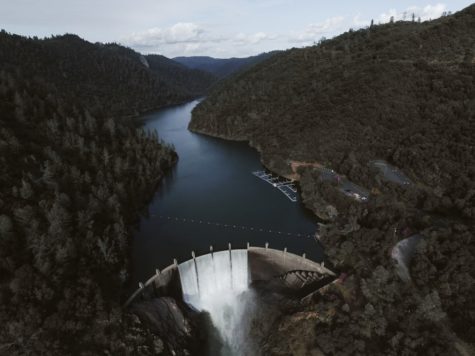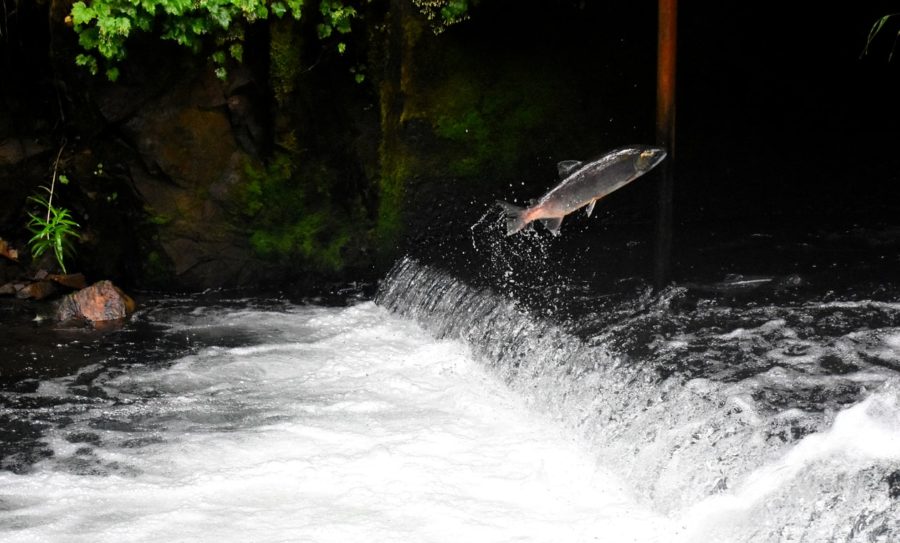The Origins of the Salmon Cannon and Its Pros and Cons
Fish are being shot at up to 22 miles per hour over dams in an attempt to help them to reach their ancestral breeding grounds.
Migratory fish such as salmon swim through rivers in order to lay their eggs in calmer waters upstream.
Fish are now being shot out of a cannon at up to 22 miles per hour. In comparison, the fastest person on earth, Usain Bolt, reaches 23.35 miles per hour. As part of their life cycle, salmon cross rivers and swim upstream in order to lay their eggs; however, due to the creation of dams, salmon are often no longer able to swim upstream rivers in order to spawn, as they had once done. To solve this problem, scientists invented a way to launch pregnant migratory fish such as salmon at up to 22 miles per hour over dams and into the water past the dam, so that the fish can reproduce and continue their natural life cycle.
The salmon cannon originated from a fruit farm. A farmer wanted a more efficient method to harvest fruits without damaging them, and thus created a long tube that would gently transport apples down from the trees, leaving them unharmed.
Later, Whooshh Innovations began to apply this technology in the transport of salmon. Whooshh Innovations responded to the problems created by the dam with a unique innovation in order to help fish return to their birthplace. Karin Mitsuta ’24 believes that this “sounds like a reasonable solution to the problem, although natural methods are always preferred.”
The fish cannon isn’t much like a traditional cannon. It doesn’t actually use gunpowder and is definitely not a weapon of war. Instead, it is a long plastic tube that uses air pressure in order to move the fish.
Prayag Tamarisakandala ’23 asked, “Can this hurt the fish?” Fish cannons do not actually harm the fish because of the tube’s lack of friction. This, despite the name, makes it a very smooth ride for the fish.
Scientists have discovered that the fish showed no change in short-term levels of stress. Grace Lin ’23 said, “I am glad that the scientists haven’t found a short term increase in stress levels in these fish, but I wonder about long-term effects on these fish.” While this remains unanswered, scientists continue to research the long-term levels of stress in these fish and hope to find an answer.

Dams have been built across the world in order to procure more sustainable sources of energy which is done by blocking most of the water and only releasing a small stream. This secures a lot of potential energy creating hydroelectric power, which is in turn used to produce electricity.
There are many alternative methods of harnessing energy available such as solar power, wind power, bioenergy, and geothermal energy, similar to there being alternatives to helping salmon cross the dam such as the fish ladder, culverts, and dam removal. All of them come with both advantages and disadvantages.
Dams also have a great impact on communities that rely on fish for food. The Native American tribe of Nez Perce depends on the salmon that come to their side of the river. It is a big part of their culture and spiritual practices, which have been threatened by the drop of the Snake River wild salmon’s population by 90% after a dam was put in the river.
Dams, huge barriers that block moving water, creating a reservoir, end up effecting even those who do not hunt for fish. Due to the barricade, the source of the river will be prone to flooding while the mouth will be nutrient dry and face dry seasons, causing changes in the region’s climate through dry seasons.
The salmon cannon is a “really interesting tool that can help the fish reach their migratory grounds in an unorthodox and cool way,” said Katrina Tablang ’23. Despite its funny name, the salmon cannon remains one of the best methods currently of transporting fish across dams. With the help of the salmon cannon, salmon around the world are able to return to their birthplace even if dams block their path across a river. The salmon cannon is an inspiring example of human ingenuity in the face of environmental degredation.
The salmon cannon is a “really interesting tool that can help the fish reach their migratory grounds in an unorthodox and cool way,” said Katrina Tablang ’23.
Khado Tsephel is a Copy Chief for ‘The Science Survey.' In her free time, she enjoys reading and listening to music. In college, Khado wants to pursue...

